The temple of Lokanatha is situated at a distance of about 2½ kms to the west of Jagannatha temple of Puri. The western boundary of the Puri town is guarded by the temple of Lokanatha, which is traditionally said to have been established by Sri Ramacandra, the Hero of Ramayan. There are no artifacts in the temple to indicate that remote antiquity, however.
This temple is one of the most important Saiva shrines of Orissa. The place of Lokanatha temple is surrounded by a number of mango trees and in the midst of the tope there is a group of temples within a specious compound and also a big tank (Parvatisagara) in the close neighbourhood. Many small temples are found in the temple premises. From the religious point of view, the Shaiva shrine of Lokanatha occupies an important position in the cultural history of Orissa. According to tradition the devotees who come to visit Lord Jagannatha also visit Lokanatha.
[wp_ad_camp_1]
The place of Puri is also known as Sankha Ksetra. The layout plan of this sacred city is often described as resembling the shape of a conch shell. Skanda Purana, in its Purusottama Mahatmya, even mentions different Deities residing in various parts of the conch shell. The majestic temple of Jagannatha occupies the navel or center portion of the Sankha Ksetra. The areas from Belesvara to Alabukesvara or Lokanatha temple is regarded as the place of Sankha Ksetra. On the basis of the cultural importance, Sunil Ratha has stated that Lord Lokanatha has been worshipped as the protector of the Sankha Ksetra. He is also regarded as the custodian of the treasury or bhandara-raksaka of the Jagannatha temple.
Sri Lokanath
The Deity Lokanatha is said to have been mentioned in the Mahabharata (fourth-century B.C.). The legend says that Lord Rama, on his way to Sri Lanka while for searching Sita, reached Purusottama Ksetra and sat with a vow to see Siva here. At that time there was a Sabarapalli nearby. Sabaras presented him a Lau or Lauka (a pumpkin type of vegetable) looking like a Siva-Linga. Rama installed it as the replica of Siva-Linga at that place and prayed to Siva to fulfill his desire. From that day, a Siva Linga placed by Lord Rama was called Laukanatha. It is believed that the word Lokanatha is a later innovation from the word ‘Laukanatha’ or ‘Alabukanatha’ or ‘Alabukesvara’. This information has been given by Jagabandhu Padhi. On the basis of the Bamadeva Samhita and some other legends, it is known that Alabukesvara is a Saiva shrine situated to the west of Yamesvara temple.
Perhaps when the name of Purusottama was replaced by Jagannatha, then the name of Lokesvara or Laukanatha might have been converted to Lokanatha. The time period of the conversion of Lokesvara to Lokanatha might have occurred in the 12th or 13th century AD. Natives of Puri town hold that this shrine is traditionally known as Lokanatha, which Sivalinga is installed by Rama Chandra in Treteya Yuge.
There is a reference in Mahabharata which tells that Panca-Pandava (Yudhistira, Bhima, Arjuna, Nakula and Sahadeva) during the time of disguise for one year visited “yajna Vedi” while undertaking Tirtha Yatra. They reached this place in the evening, stayed for one night and worshipped Lord Vishnu here for their safe journey. As a symbol of this Yatra, five Mahadeva temples were constructed in the place of Purusottama Ksetra to memorialize their stay in this Dhama (holy place).
According to M.M. Tripathy, those prominent five Saiva Shrines are viz. Lokanatha, Yamesvara, Kapalamocana, Markandesvara and Nilakanthesvara. They are known together as Panca Pandava or the five Pandavas. The temple of Lokanatha is the most important shrine among the Pancha-Mahadeva temples of Puri. This Shiva shrine is locally called as Bhimasena, the strongest brother amongst the Panca Pandava.
Architectural features of the temple
The temple of Lokanatha is one of the most important temple at Puri and is conspicuous because it is oriented towards the west. According to H.C. Das, the Pasupata temples of Orissa of the Sailodbhava period had such a typical orientation towards the west. The temple consists of four structures such as Vimana, Jagamohana, Natamandapa and Bhogamndapa. This temple is built in sandstones locally called Sanla Pathara. Due to many natural calamities, the present temple of Lokanatha is buried near about 15 feet under the sand.
Vimana The Vimana of the Lokanatha temple is a Pancaratha Rekha deula and its height is about 30 feet from the ground level. Most of the bada portion of the Vimana have been covered with marbles, so the detail architectural features of the bada are not distinct. The baranda of the bada is completely plain and also covered with marbles.
Parsvadevatas
The central niches of the three sides of bada are housed with the parsvadevata figures of Uma-Mahesvara, Kartikeya and Ganesa. The image of Uma-Mahesvara is the parsvadevata of the northern side. The image of Siva or Mahesvara has been installed on a plain pedestal. Devi Parvati or Uma is in seated posture on the left lap of Siva. Out of the four hands of Mahesvara, three hands display trisula, dambaru, abhaya mudra and the remaining hand is lying upon the shoulder of Devi Parvati or Uma. The left hand of Devi Uma (Parvati) possesses a lotus flower while the right hand lies on the shoulder of Lord Mahesvara (Siva).
The back-slab of the Uma-Mahesvara image is carved with a trefoil Makara arch. Two flying apsara figures are carved on either side in the top corner of the background slab of this side Deity. Lion and Bull, the traditional mounts of the both Deities, are also found on the pedestal. Three female devotees in kneeling postures are also carved on the pedestal. China plates finely cover the inner walls of the northern side parsvadevata niche. Marbles cover the ground floor of the northern side parsvadevata niche. The front side of parsvadevata is covered by a shrine of the Pidha order and its height is about 15 feet from the ground of the temple. The outer walls of this shrine are also covered with marbles. The inner walls of the nisha shrine are adorned with a group of female Deities, some of whom can be identified with Parvati, Laksmi, Sarasvati, Mahesvari and Kaumari. Their mounts below the pedestal and attributes in hands can we be recognized.
Kartikeya is the parsvadevata whose image is housed in the eastern niche. There is a small slab which contains the image of Kartikeya. Out of the four hands of this Deity, three display kukuta (rooster cock), spear, dambaru and the attribute in the remaining hand is not distinct. Peacock, the conventional mount of the Deity, is found on the right side of the pedestal. The front niche of the Kartikeya image is also in a subsidiary shrine of Pidha order and its height is about 7 feet from the surface of the temple complex.
There is an image of Lord Narasimha installed close to the subsidiary shrine of the eastern side. His upper two hands display conch and cakra. The image of Narasimha is carved in the Uttanasayi pose. The four handed image of Ganesa is the Parsvadevata of the southern side of the bada. The image has been installed on the double-petalled lotus pedestal. His right two hands display broken tooth and rosary while the left two hands hold parasu and sweet balls. Mouse, the conventional mount of Ganesa, is installed on a pillar of two feet high and it is noticed in front of the subsidiary shrine. A flat roof covers the mouse pillar. The image of Ganesa is also housed in the subsidiary shrine of pidha order.
The curvilinear superstructure is surmounted on the gandi of the Vimana. It also continues the Pancaratha plan of the bada. The entire gandi portion of the Vimana is covered with marbles. The middle portion of the Raha paga of the gandi is projected with Gaja-simhas on each side. There is a niche above the Gaja-simhas of the southern side Raha paga of the gandi and it is housed with a slab, which contains the images of Siva and Parvati. Both lion and bull, as the traditional mounts, are finely carved on either side pedestal of the Deities. The eastern side Raha paga of the gandi contains an image of the four-handed Siva (Lokanatha) who is standing on a bull. His upper two hands hold a snake while the lower two hands display abhaya and varada mudra, respectively. Other pagas of the gandi are devoid of decorative ornamentation due to the covering of marbles. The dopichha lions are finely fixed on the top of the kanika pagas of the gandi.
The figures of the deula carinis are inserted in the four cardinal directions of the beki above the raha. These figures are the supporting elements of the amalakasila of the mastaka.
The mastaka of the Vimana consists of usual elements of beki, amalakasila, khapuri, kalasa, ayudha (trident) and dhvaja. The sanctum preserves the Siva linga as the presiding Deity of the temple. This linga is shown to the devotees once in a year. The sanctum including the linga is filled with water throughout the year by a natural fountain. The water is finally discharged to the neighbouring Parvatisagara through an open channel. In the night of Pankoddhar Ekadashi (3 days before Shivaratri), the 14th day of the dark fortnight in the month of Magha, all the water is bailed out and the divinity becomes visible and thousands of devotees are able to worship the Lord. This is looked upon as a miracle and signifies the great sanctity of the place. Masonry steps are provided for approach towards the sanctum. According to M.M. Ganguli, there is nothing striking in the temple except the Lingam, which is always under water of a spring.
The Vimana has one doorway through the Jagamohana, which is invariably kept closed and the devotees peep through a window into the interior where dwells Jagannatha, the Lord of Universe. The doorjambs of the sanctum are completely undecorated. The image of Gaja-Laksmi is carved on the middle portion of the doorway lintel. The figures of Nandi and Bhrngi are finely carved on either side base of the doorjamb. They are acting as the dvarapalas of the main deula.
Jagamohana
The Jagamohana of the Lokanatha temple is a pidha deula and its height is about 22 feet from the ground of the temple. The bada portion of the Jagamohana is completely buried under the earth. The pyramidal superstructure is surmounted on the gandi of the Jagamohana. It consists of seven pidhas and the sides of each pidha are decorated with tankus. The bada and gandi of the Jagamohana are thickly plastered with lime mortar.
The mastaka of the Jagamohana consists of usual elements of beki, ghanta (bell-shaped member) above which there is another beki, amalakasila, khapuri, kalasa, ayudha (trident) and dhvaja.
The outer southern wall of the Jagamohana contains a composite image of Hari-Hara (half Vishnu and half Siva). This composite image of Harihara is installed on a double petalled lotus pedestal. The right two hands of this composite deity display trident and damburu while the left two hands possess conch and cakra. The pedestal of the composite deity contains both the figures of Bull and Garuda as the conventional mounts of Siva and Vishnu, respectively. Parvati and Laksmi as consorts of both the Gods are also carved on either side of the lotus pedestal. The background slab of the composite Deity is decorated with a trefoil arch with makara head at the base and flower medallion at the apex. Apsaras and Kinnaras holding garlands in their hands are carved on either side top corner of the slab. Its workmanship convey the artistic tradition of a very late period.
The Jagamohana has three doorways, which are devoid of decorative ornamentation. The image of Gaja-Laksmi is carved on the middle portion of the door lintel of the eastern side. A stepped passage through this porch leads the devotees to the presiding Sivalingam within the sanctum. The inner walls of the Jagamohana are completely undecorated. The antarala portion between the Jagamohana and the naoameoapa is covered by the small pidha deula, which is supported by the four circular pillars.
Natamandapa
The Natamandapa of the Lokanatha temple is a pidha deula and its height is about 20 feet from the ground of the temple. The badahas, five divisions such as pabhaga, tala jangha, bandhana, upper jangha and baranda. The base of the bada is square of 15 feet on each side. All the component parts of the bada are completely undecorated. The pyramidal superstructure surmounts the gandi of the Natamandapa. It consists of three bell-shaped pidhas. The mastaka of the Natamandapa consists of Khapuri and Kalasa only. There is a bull-pillar of 3 feet in height found in the middle portion of the floor of the Natamandapa. The recumbent bull has been installed on the top of the pillar and it is made of black chlorite stone. The inner walls of the Natamandapa contain some crude sculptures of Sarasvati, the head of Rahu, Nandi and Bhrngi, etc.
The Natamandapa of the Lokanatha temple has doorways on all four sides. The base of the doorjambs of the eastern side contain figures of Nandi and Bhrngi. They are acting as the dvarapalas of the eastern side door. The central portion of the doorway lintel contains an image of Gaja-Laksmi. She is carved on the double-petalled lotus pedestal. The figures of the Navagrahas are carved on the architrave above the doorway lintel. Other doorways of the Natamandapa are completely undecorated.
Bhogamandapa
The bhogamandapa is a pidha deula and its height is about 22 feet from the ground of the temple. It is a rectangular hall and measures approximately 45 feet in length and 25 feet in width. The bada of the structure is consisting of five elements such as pabhaga, tala jangha, bandhana, upper jangha and baranda. All the elements of the bada are devoid of ornamentation. The pyramidal superstructure is surmounted on the gandi of the bhogamandapa. It consists of three pidhas. There is only one kalasa found from the top of the upper pidha.
The inner western wall of the bhogamandapa contains some sculptures in its niches. They are viz. Narasimha, Bhairavi, Siva-parvati, Shyamakali and Swami Sankaracharya.
The four handed image of Narasimha has been installed on the plain pedestal. His upper two hands possess conch and cakra and lower two hands are engaged to take out the entrails of Hiranya Kasyapu (demon). The astabhuja Bhairavi image has been also installed in a niche of the western wall. Her right four hands display dambaru, khadga, panapatra and the remaining hand is empty while the left side two hands possess severed head and flower. Other two hands of the left side are completely broken. Another slab contains the images of Siva and Parvati. They are in seated postures with usual attributes in hands. Both lion and bull have also been carved on either side of the pedestal. Two flying apsara figures are carved on either side in the top corners of the slab. Devi Parvati is seated on the left lap of Siva.
Another niche of the western wall contains the figure of Swami Sankaracharya. He is seated in Padmasana posture. The western inner wall of the bhogamandapa also contains the figure of Shyamakali. The four-handed image of Devi Shyamakali is standing on the prostrate body of Siva, who is lying on the pedestal. Her four hands display Khadga, severed head, Abhaya mudra and Varada mudra.
The inner walls of the bhogamandapa are also depicted with paintings of Markandesvara, Kailasa Mountain and the ten-armed Banambar (Shiva). The local artists of Puri have finely executed these paintings.
Other Minor Shrines Besides these four structures, there are some other minor shrines which are found on the premises of the Lokanatha temple. A miniature shrine to the left of the inner courtyard preserves images of Surya-Narayana and Candra-Narayana. It is a pidha deula and its height is about 10 feet from the ground level. There is a small shrine of the Rekha order found in the southern side of the main deula. It is the replica of the main temple (Vimana) of Lokanatha.
There is a small shrine of Lord Narasimha, which is closely attached to the eastern side nisha-shrine of the main deula. Within the premises can be noticed footprints under worship on a masonry pedestal.
The Satya-Narayan shrine within the premises preserves images of Vishnu, Laksmi and several brass idols. The mandapa in front of the main shrine contains several broken figures of Uma Mahesvara, Camunda, Bhairava, Navagrahas, bull and brass idols etc. The panca-devata shrine is located in the northeast corner of the temple complex. These Deities are viz. Ganesa, Narasimha, Rudra (Shiva), Mahisamardini Durga (Ambika) and Bhaskara (Surya-Devata)
At the very entrance to the premises one can notice a series of female divinities worshipped in the name of Camunda, Hadaphuti and Sitala. They have been very badly mutilated and the available parts are thickly coated with vermillion. Their proper identity is very difficult to be arrived at. The walls around the entrance to the inner courtyard preserve within their niches figures of Hanuman in different poses, Parvati and a scene representing Siva’s marriage with Parvati. The Hanuman figures are holding the branch of a tree and a piece of rock in both hands. The figure of Parvati is seated by crossing the leg, and the lion as her mount is carved to the left. Her three hands display varada mudra, snake and goad. The remaining hand is damaged.
The panel representing the marriage of Siva with Parvati reveals Siva on his mount, Nandi the bull. Parvati with offerings in hands is standing in front of him. Out of the four hands of Siva, three display rosary, trident, dambaru and the remaining hand is stretched over his right knee. Attendants of Siva holding umbrellas, flywhisks and playing on musical instruments have assembled in front in a row. The navagrahas are finely carved on the architrave above the door lintel of the inner main entrance porch. They are seated in Padmasana with the usual attributes in their hands. Kutab Candi image has been installed on the niche of the right side wall of the main entrance (inner).
The middle gateway of the temple complex is covered by the makara-headed torana. It faces to the north towards the tank of Parvatisagara.
There is another main gate (outer) built in the eastern side of the boundary wall. The Trust Board under the control of the State Endowment Commissioner has constructed it. The gate is decorated with trefoiled arch; Makara head at the base and the Gaja-Laksmi image at the apex. Two lions are also leaning in on both sides of the Gaja-Laksmi image. Two big-sized lions are in seated postures on both sides of the main gate. Two additional gateways are constructed on the both sides of the main gate. These two gates are used at the time when the temple complex is very crowded. Two galloping horses are installed on either side of the additional gates. Thus, there are three gates found in the complex of the Lokanatha temple. These gates are viz. first in the inner main entrance, second in the middle, and the third one in the main outer entrance gate of the temple complex.
The compound of the Lokanatha temple is about 10 feet below the road level. The steps made of stones are provided for entry into the temple complex. In short, the Lokanatha temple though primarily dedicated to Lord Shiva, is a storehouse of cult icons of other objects of worship.
Date of the Temple
There is lot of controversy among the historians as well as the archaeologists with regard to the approximate date of the Lokanatha temple of Purusottama Ksetra or Puri. According to R.L.Mitra, the oldest temple extant is the temple of Alabukevara built by Lalatendu Keshari (AD 623 to 627 AD). Dr. B.K.Rath has described that the temple of Lokanatha was constructed in 19th century A.D. ). Jagabandhu Padhi has stated that Udyata Keshari (AD 1040-1065), son of Yayati-II of Soma dynasty had a second name Alabuka Keshari and it is stated that he had constructed the temple of Lokanatha at Puri and that it originally had the name Laukanatha, Alabukesvara or Alabuknatha.
Architectural designs and sculptural features of the temple also suggest that it belonged to the Somavamsi period of Orissan history. Most of the scholars accept that the Saiva temples of Puri town or Purusottama Ksetra were constructed during the Somavamsi period of Orissa history. On the basis of the architectural style, the construction period of the Lokanatha temple can be tentatively assigned to the eleventh century AD and probably it was built before the construction of the present temple of Jagannatha. The available sculptures, which are now in the precincts of the temple complex, were made in the later period of the temple construction.
Rituals and Festivals
Lord Lokanatha’s Bije Pratima (His representative image) is in the Sri Jagannatha temple, known as Bhandara Lokanatha. He is the guardian deity of the Ratnabhandara (treasure house) of Sri Jagannatha temple. Lokanatha is associated with Lord Jagannatha in several rituals like Sivaratri, Candan Yatra and Sital Sasthi.
The festival of Sivaratri is observed in the temple of Lokanatha with great devotion. On the Mahasivaratri, lots of devotees arrive near the temple to offer their prayers to Lord Lokanatha. On that day, devotees with great enthusiasm worship the image of Hari-Hara. Accordingly to Pt. S.N. Dash, the temple of Lokanatha is the coordinating place of both Saivism and Vaishnuaism. The followers of both sects assemble here to worship Harihara.
On the day of Sivaratri, a meet is arranged between Lokanatha (Hara) and Jagannatha (Hari). The union seems to be an assimilation of Vaishnavism and Saiva-cult. The Harihara cult is highly significant, “as light is submerged into light and cannot be separated”. It signifies the emotional integration and mutuality of Saivism and Vaishnavism at Puri. Large numbers of devotees also gather here on the last Monday of Baisakha to worship the Lord Harihara. According to a local tradition, people who suffer from incurable diseases come here for prayer.
A Trust Board under the control of State Endowment Commissioner is managing the temple of Lokanatha.
It is known from the above discussion that the temple of Lokanatha is one of the prominent Saiva Shrines of the Purusottama Ksetra or Puri. Among the five prominent Saiva Shrines of Puri, the temple of Lokanatha is the most important from the cultural point of view. It is said that the temple of Lokanatha is the first established Saiva shrine of the place of . The shrine of Lokanatha is actually a temple complex with compound wall; much like that of the Jagannatha temple. On the whole, from the architectural point of view, the temple of Lokanatha has no such importance but from the religious point of view, it is next to the Jagannatha temple of Puri.

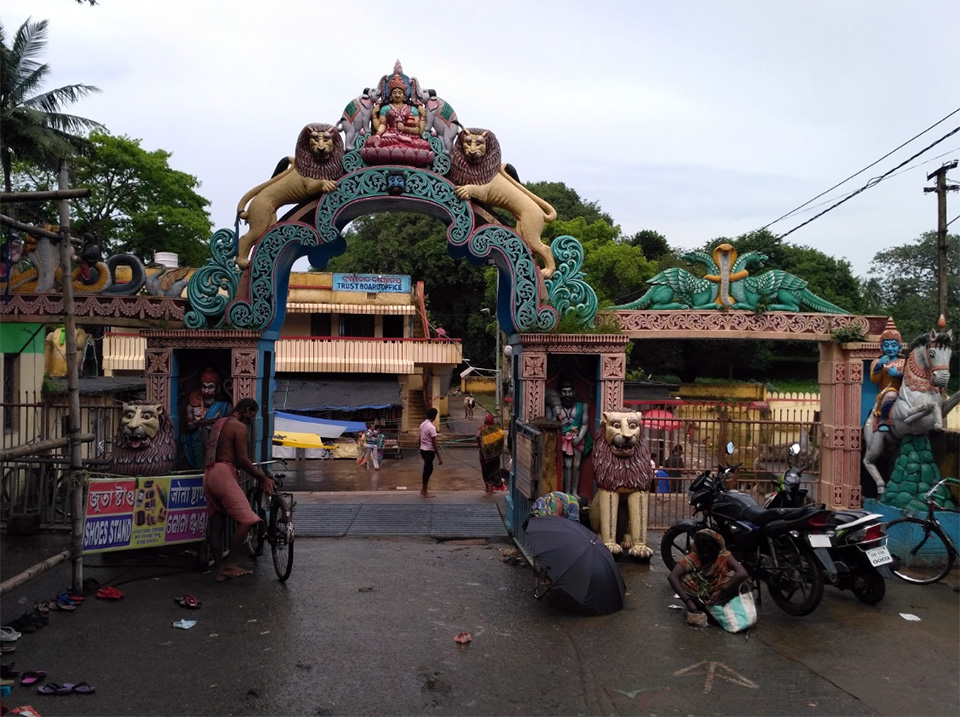
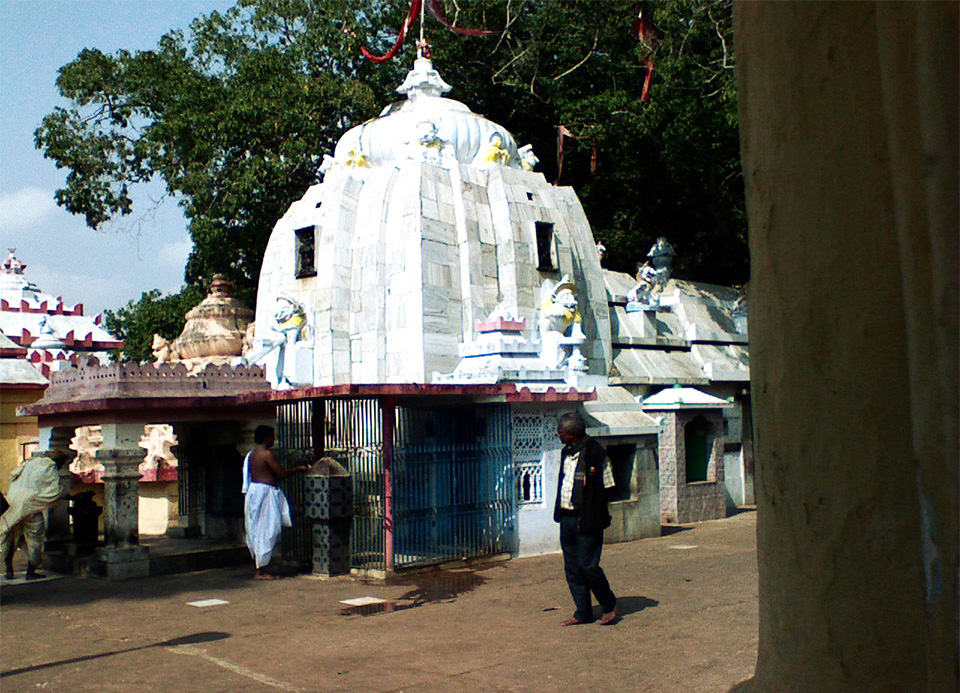

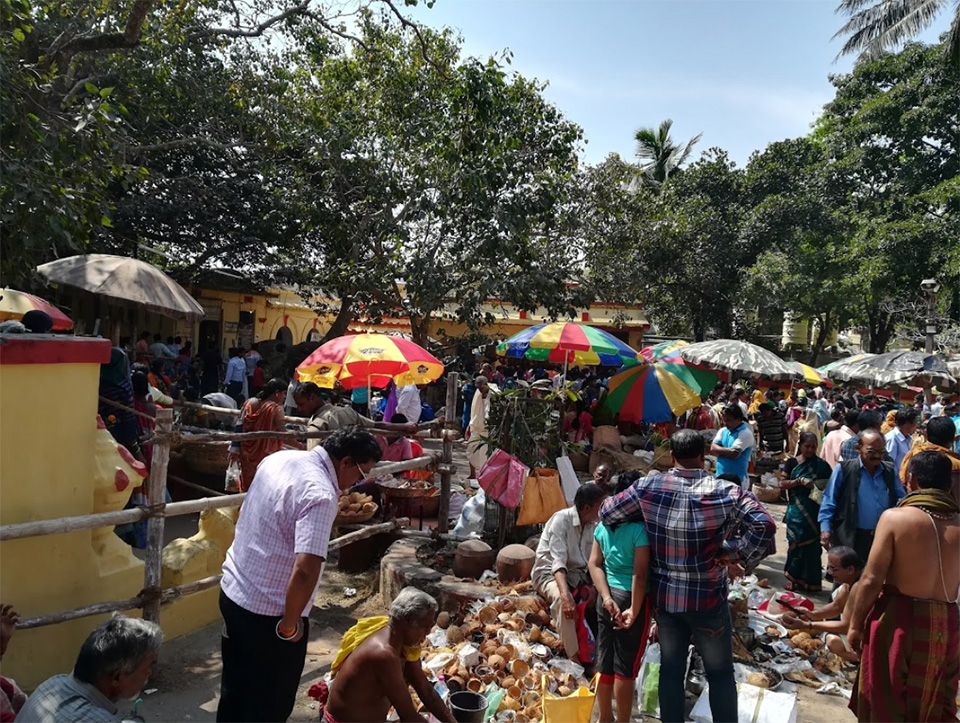


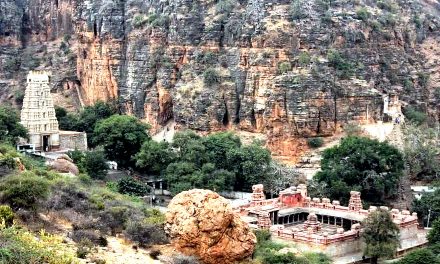
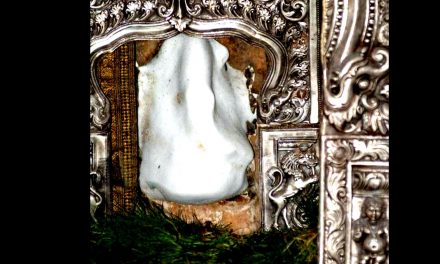









There is a big temple having Harihar in form of a Linga together.
Let us have details and photograph of it.
Thanks
A US research publication titled goddesses in world mythology by Martha Ann lists 3500 goddesses worshiped in the world during 30000 to to. 5000 BC of which 800 have been worshiped in India.
I am already a subscriber and I very much like the articles which are elaborate and informative. Thanks. Janakiraman.V. Nagapattinam Tamil nadu.